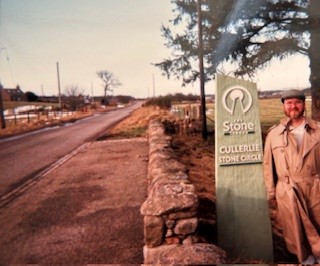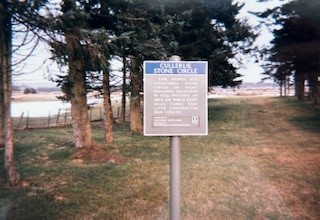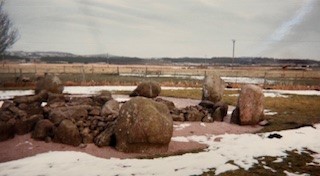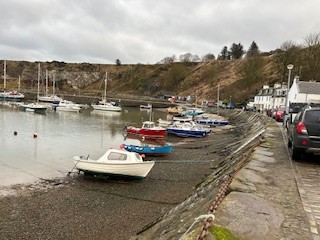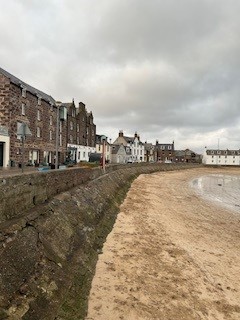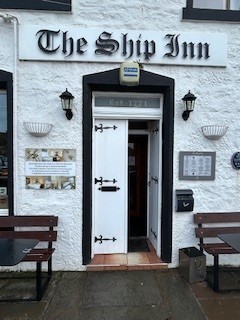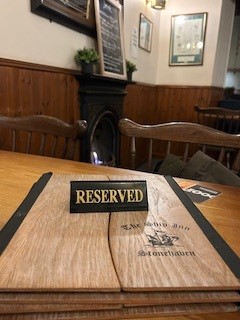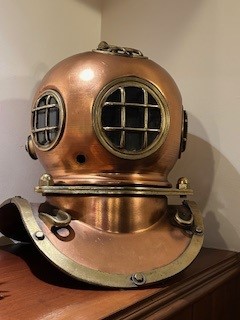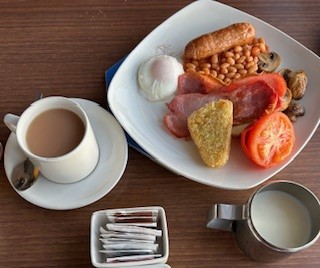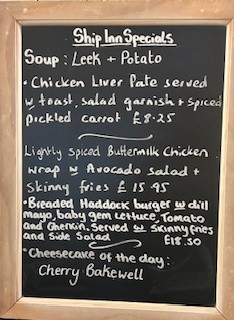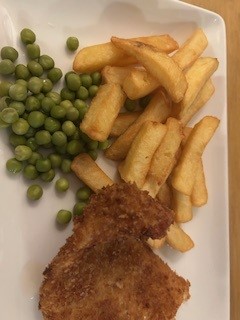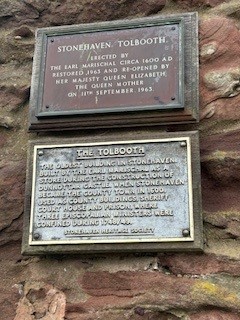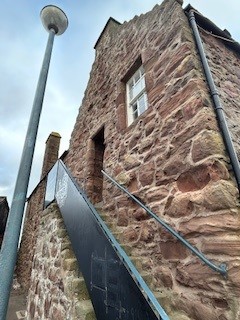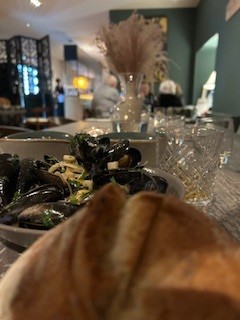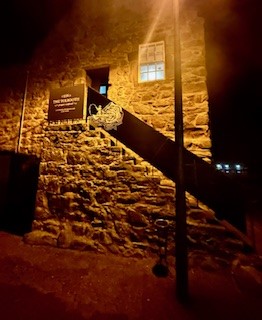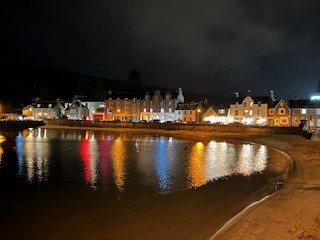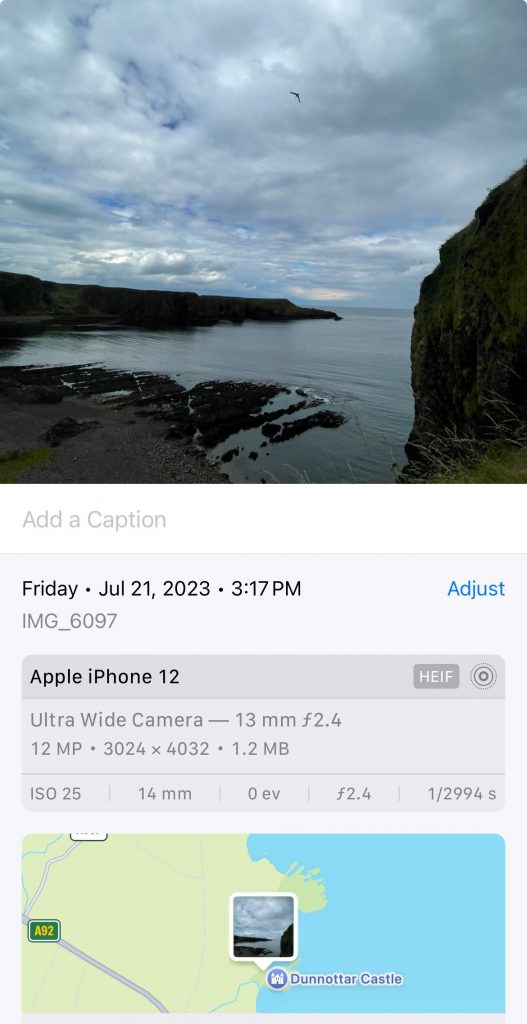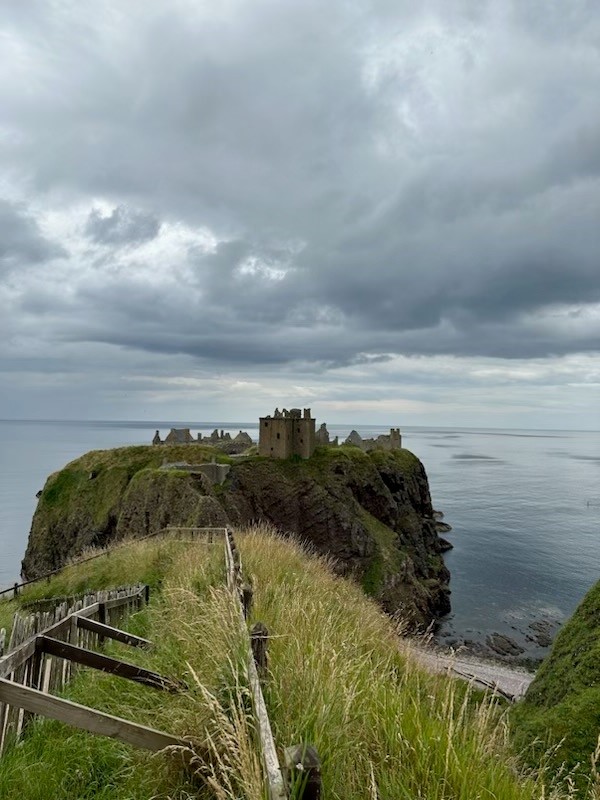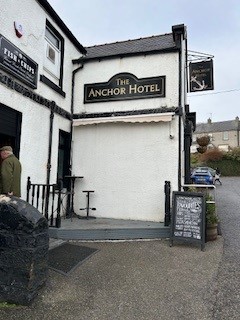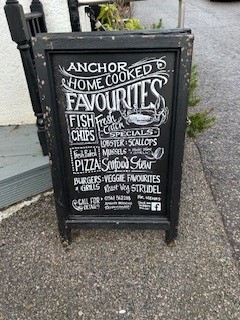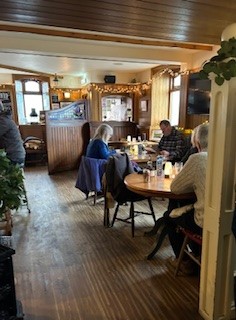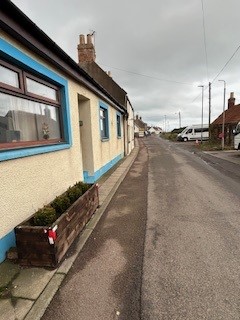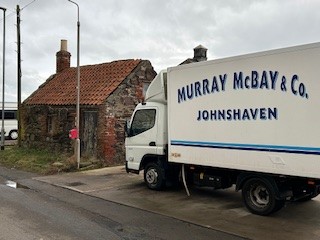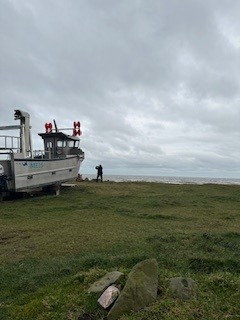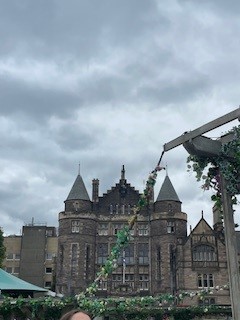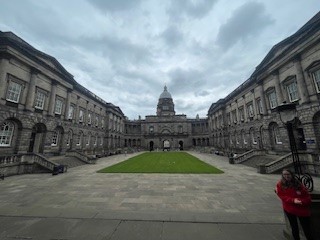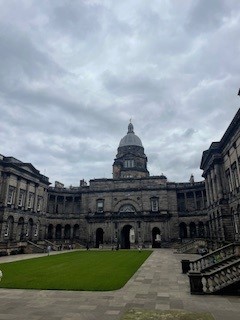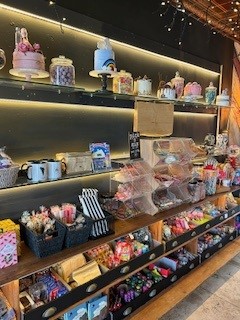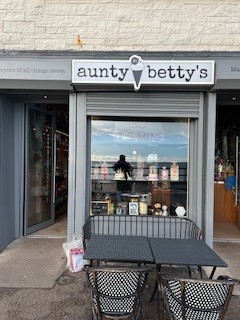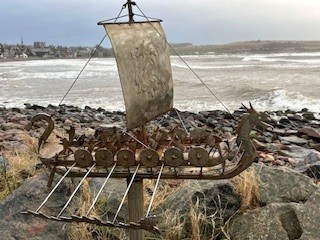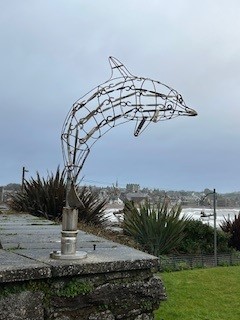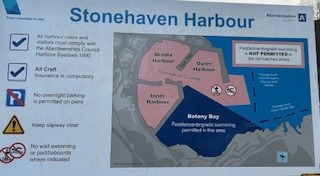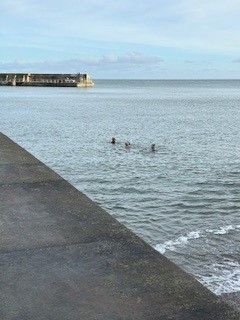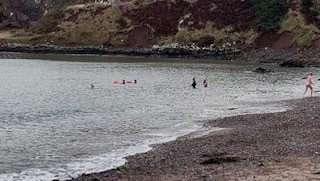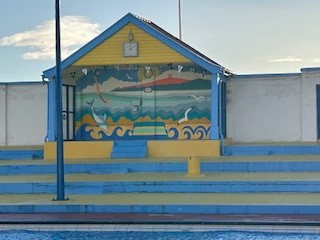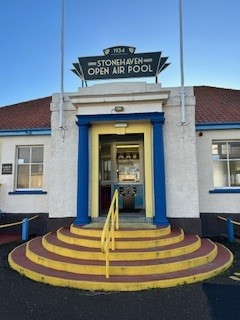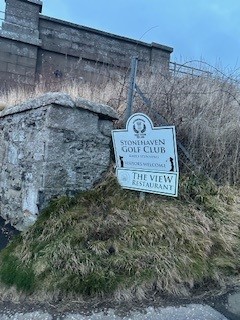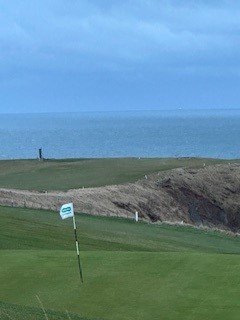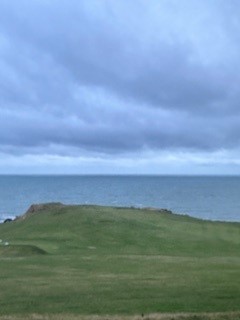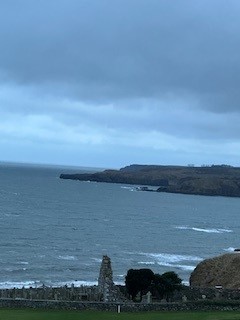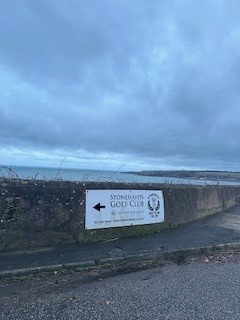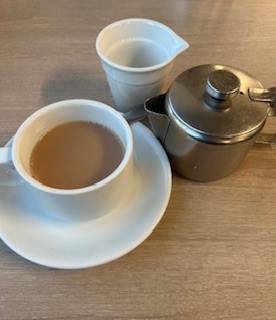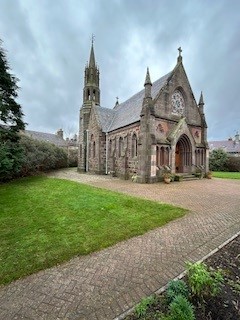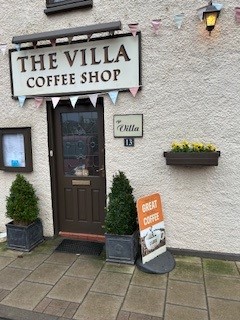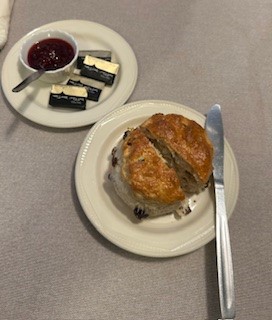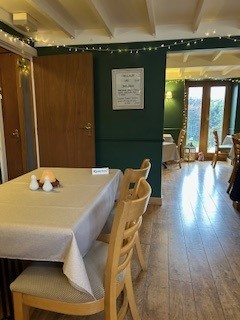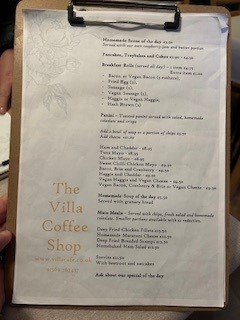Travelers Culinary adventure : a Scotland Story
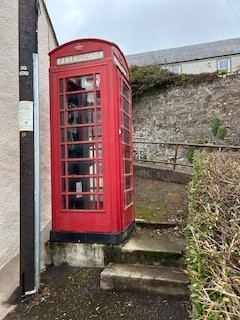
Scotland
Prelude
It is a rainy day in Sioux City—a good day for reflection, with field coffee in hand. I stay somewhat dry as I stand in the rain, reminded that Scotland’s latitude is above Alaska’s. Long summer days, short winter nights. One does not go to Scotland for the weather; rather, one experiences all seasons in a single day. A good rule to follow in the old language: Ne’er cast a clout till May is out.
The Scottish story begins at a small farm in Cullerlie, its roots reaching back to the Picts. A small stone circle on the land intertwines history, myth, and landscape. This Bronze Age circle, thought to be a burial site, is one of many henges aligned with astronomical events. Scotland’s northeast is a land of magic, steeped in legend and folklore, where stone circles are often linked to fairy gatherings, ancient rites, and unseen energies—a timeless magic connected to something older than written history.
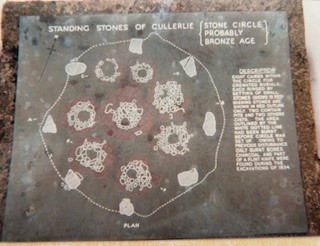
The Picts, known for their elaborate carvings and warrior culture, once ruled these lands. Their presence lingers in the landscape, in the old farmsteads, and in the folklore that still whispers through the hills. It was on this farm that Berta, the family matriarch, was raised.
Traveling to Scotland
Visiting Scotland is a journey to see family. The flights take about two days, landing in Aberdeen before heading south to Stonehaven.
The geographic center of our family’s connection is Stonehaven harbor. We stay at The Ship Inn, a cornerstone of the landscape, as much a part of the North Sea as the waves themselves. It becomes our home away from home, our refuge.
At the tavern, Guinness is poured to perfection—unbruised from its journey across the sea, unlike what is often served back in the States. I am convinced that transatlantic travel bruises the Guinness.
The local fare: The menu, displayed on a whiteboard above the fireplace, tempts us with smoked salmon, pickled beetroot, and goat cheese—a true delight. Fish and chips, a staple, become an obsession. By the trip’s end, I find myself preferring battered over breaded. And of course, greens are a necessity, even with fish and chips.
If you stay the night, have the full Scottish breakfast—but don’t ask what the black bits are.
The Tolbooth
The North Sea whispers against the harbor, the calm before Storm Eowyn’s arrival. A worn yet resilient path leads to the oldest building in Stonehaven. The salty breeze carries the voices of patrons inside the Tolbooth. We venture to the second floor and are delighted.
Ask for the table at the window.
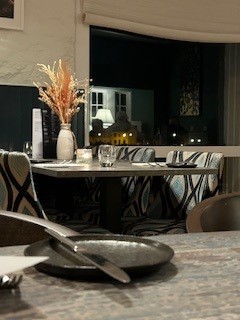
This town has withstood time, tide, and storms, standing as a gathering place for centuries. The Tolbooth, once a storehouse for Dunnottar Castle, now serves treasures of a different kind—plates of fine Scottish seafood, perfected by skilled hands. A reminder that history is best served one bite at a time.
Dunnottar Castle
Just up the road from Stonehaven, a two-mile walking path leads to Dunnottar Castle. This dramatic clifftop ruin overlooks the North Sea, a paradise for history buffs and lovers of cinematic landscapes alike.
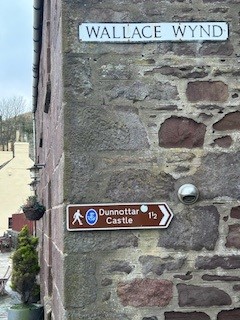
Dunnottar played a significant role in Scotland’s turbulent history, particularly during the Jacobite uprisings. One of its most famous moments occurred during Oliver Cromwell’s invasion when the Scottish crown jewels were hidden within the castle walls to keep them from English hands. After an eight-month siege, the castle fell, but locals smuggled the jewels out, preserving them for Scotland. Later, after the Jacobite rising, the British government destroyed the castle to prevent further rebellion. Dunnottar’s history is one of royalty, rebellion, and tragedy—a place we visit every time, always discovering something new.
Johnshaven & The Anchor Hotel
The Anchor Hotel in Johnshaven is worth the stop. Its menu reads like a love letter to Scotland’s coastal bounty. We’re on a quest for the perfect bowl of Cullen skink, although our waitress refuses to divulge its rating by the Cullen Skink Society. A bowl of creamy smoked haddock soup feels like a warm Scottish hug, each spoonful balanced by the earthiness of Scottish potatoes and the sweetness of leeks.
As you enter Johnshaven, pay attention to the local animal crossings.
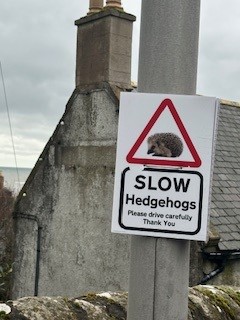
Edinburgh
Returning to Stonehaven, one can take a direct train to Edinburgh—a two-hour journey along the coast, passing Montrose and Dundee before heading inland.

Edinburgh University was one of the schools our daughter toured. An international education would have led her down a distinctive path, and tuition was less than in-state college fees in Colorado. The university boasts grand stone buildings and hidden courtyards. Victoria Street, the inspiration for Diagon Alley in Harry Potter, is lined with quirky shops and bookstores.
While touring, Frances was invited to play a match of Muggle Quidditch—spectators included, with the opportunity to chase the golden snitch.
Ultimately, she chose a more exotic place for her studies: Omaha, Nebraska, at Creighton University. Nebraska is not for everyone, but it resonates for those who appreciate the unique.
Edinburgh’s Literary & Royal History
Robert Louis Stevenson was born in Edinburgh. His novel Jekyll and Hyde was inspired by the duality of the city and by William Brodie—a respected cabinet maker by day, a gambler and thief by night. The contrast between Edinburgh’s Old Town and New Town seems to mirror the struggle between good and evil, shadow and light.
Edinburgh also played a major role in the life of Mary, Queen of Scots—Scotland’s most famous and tragic monarch. In Edinburgh Castle, Mary gave birth to her son, James VI of Scotland, who later became James I of England, uniting the crowns of Scotland and England.
Stonehaven Boardwalk & Wild Swimming
Walking south along the Stonehaven boardwalk, one passes sweet shops and sandwich shoppes. Do stop for local flavors and great hospitality.
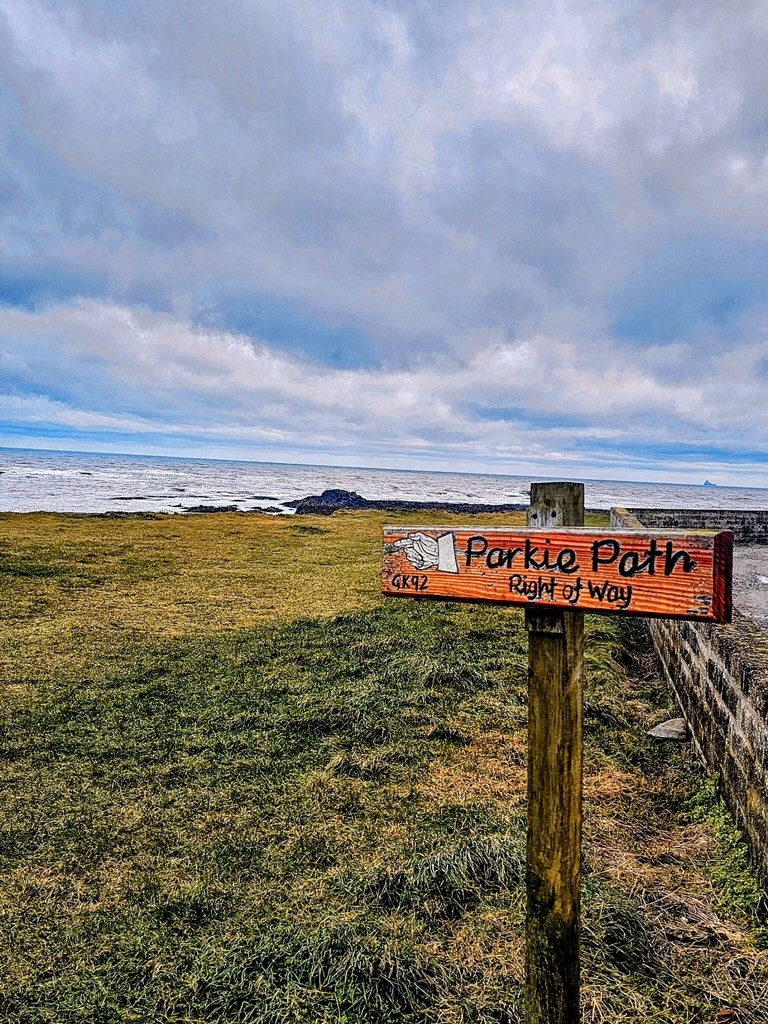
Wild swimming in the North Sea is a thing—a popular, albeit brief, activity before hypothermia sets in. I tried it at the local open-air swimming pool, where the water was a frigid 4°C. As an American, my participation became an international event, even documented on the Stonehaven Open Pool Cold Swim Facebook page.
Cold water immersion is not just for thrill-seekers; it is believed to have health benefits. For those who prefer contrast therapy, wood-fired hot tubs on the beach offer a warm reprieve.
Golf in Stonehaven
As family folklore goes, my father-in-law was once a caddie at the Stonehaven Golf Club. We played during the winter season and experienced all four seasons in a single round. Golf in Scotland is the holy grail.
Borrowing clubs from the establishment, we played the scenic, dramatic course perched on rugged clifftops overlooking the North Sea. The unpredictable winds were in full force—I hooked a shot, only for the wind to blow it straight back onto the green. Member’s luck.
During our round, we wore muck boots, and the course was reversed—adding to the links golf experience. Losing a ball to the North Sea is just part of the game.
A Proper Cuppa
For a true Scottish tea experience, visit the local tea shoppe across from the church. The aroma of fresh tea fills the air. Here, one does not ask for coffee—the process is almost reverential. Tradition dictates that milk is added first to the cup before the tea is poured, ensuring a smooth blend. A simple pleasure, steeped in tradition.
Other Sights for Next Time
- Balmoral Castle
- Drum Castle
- Crathes Castle
- Anything connected to Robert the Bruce
But these require driving—on the wrong side of the road.
